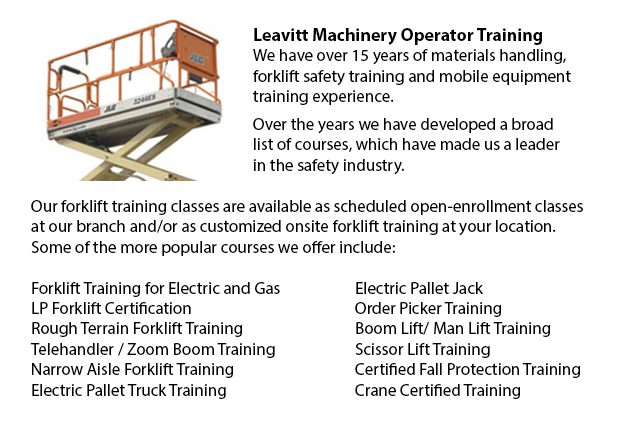
Kelowna Scissor Lift License - The operation of scissor lifts carries an inherent chance of danger. Any type of powered machinery needs proper handling to be able to prevent accidents resulting in damage or injury. Companies need to make certain that employees utilizing this particular machinery have the required training.
Untrained workers must not be permitted by their companies to use scissor lifts. The lift is made to lift people and materials to varied heights. Failure to understand and completely abide by safety standard can cause damage to the lift or injuries for users.
For scissor lift users, there is no legislation governing the utilization of fall protection. Nevertheless, manufacturers may recommend the utilization of fall protection and in various cases tying off in scissor lifts might be required by employer rules, job-specific risk assessments or local regulations.
Prior to utilizing the machine, the scissor-lift operator has to perform a thorough check in order to ensure the machinery is in good working order. This is the operator's duty, even if the unit has already been in service that day. The operator's instruction manual of the machine contains a pre-operation checklist.
Examples of what to look for when doing a pre-operation inspection comprise checking tire-inflation pressure, and checking controls in the platform and ground controls in order to make sure they are functioning. When retracting or extending the boom, look for delayed movement on the fly section which can indicate cables are loose. When operating the controls, make certain that the emergency stop switches work. Operate functions against the equipment's cutout switches. Check the boom control system by cycling a boom lift to the furthest extent of its operating envelope. Safety limiters must stop the unit automatically before it moves into an unstable position, if they are functioning right. If they aren't, shut down the lift and make certain that repairs are made before using it again.
Safe operating procedures must be followed at all time, with the levers being operated with controlled, even pressure. A control lever must never be pushed from one position to the opposite position. The lever must be shifted to neutral, prior to stopping, and after that proceeding in the desired direction. When released, levers and control switches should automatically return to the neutral position. Depress the foot switch before operating platform controls.
-
Kelowna Forklift Training Program
Kelowna Forklift Training Program - The lift truck is a common powered industrial vehicle which is in wide use these days. They are sometimes called hi los, lift trucks or jitneys. A departments store would use the forklift to unload and load merchan... More -
Kelowna Crane License
Kelowna Crane License - Crane operators ought to be "credentialed", that means they ought to have a crane operator certification or license. Credentialing is considered a mandatory governmental requirement in order to practice as an operator of a cra... More -
Kelowna Boom Lift Safety Training
Kelowna Boom Lift Safey Training - Boom lifts fall under the type of elevated work platform or aerial lifting device. Most usually used in warehousing, construction and industry; the boom lift is so versatile that it could be utilized in almost whate... More -
Kelowna Loader Training
Kelowna Loader Training - Loader Training - Any individual who would like to operate a forklift should take a Loader Training course in order to become a certified forklift truck operator. There are a variety of ways to obtain forklift training. Cour... More -
Kelowna Aerial Lift Safety Training
Kelowna Aerial Lift Safety Training - Each and every year, there are roughly 26 construction deaths attributed to the use of aerial lifts. Most of the craftsmen killed are electrical workers, laborers, painters, ironworkers or carpenters. The majorit... More -
Kelowna Crane Ticket
Kelowna Crane Ticket - Modern cranes can either be simple or complex, based upon the nature of the application they can carry out. For example, mobile cranes are somewhat simple units. A telescopic boom and even a steel truss mounts its movable platf... More -
Kelowna Boom Lift Operator Training
Kelowna Boom Lift Operator Training - The cherry picker work platform is a type of work platform, that will typically have a bucket or platform at the end of a hydraulic lifting system. The machine is likewise referred to as a man lift, boom lift, hy... More -
Kelowna Heavy Equipment Ticket
Kelowna Heavy Equipment Ticket - Depending on the nature of the job at hand, the kind of construction equipment that a heavy equipment operator makes use of differs. Every kind of machine is made to perform particular tasks in the most effective mann... More

Leavitt Operator Training
TOLL FREE: 1-888-254-6157
101-864 McCurdy Place
Kelowna, British Columbia
forkliftcertificationkelowna.com
Email Us
About Us


